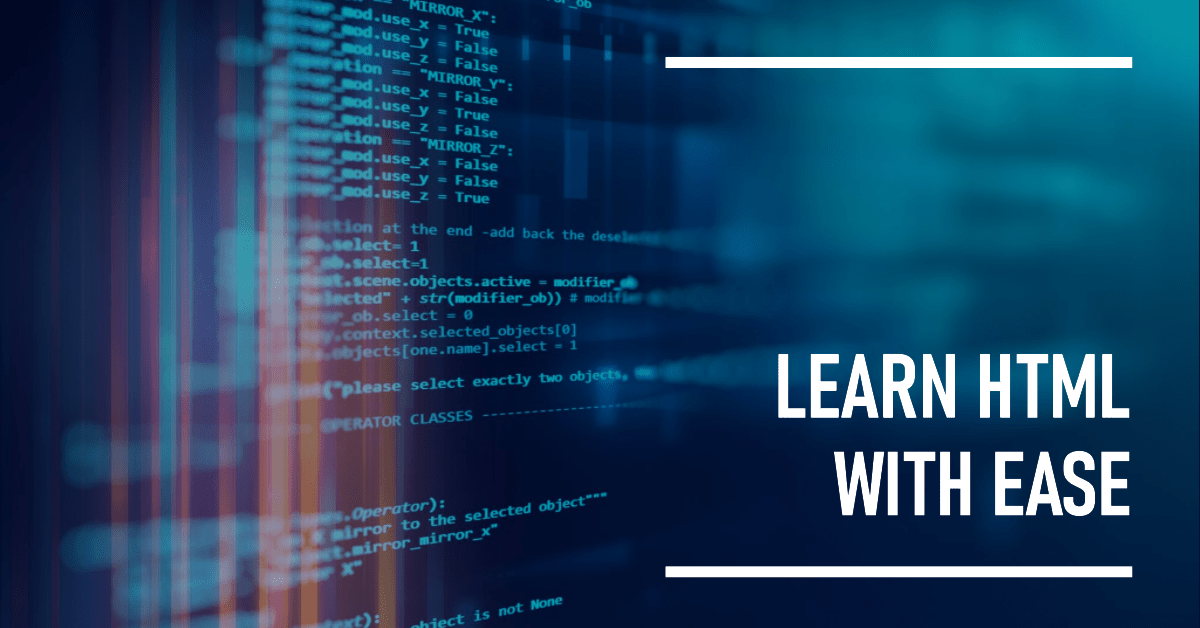
Table of Contents
In the ever-expanding digital landscape, web development stands at the forefront of innovation. Whether you’re a beginner with no prior coding experience or a seasoned developer looking to expand your skill set, HTML (Hypertext Markup Language) is the foundational language that underpins the web. This comprehensive guide will take you on a journey through the best resources and platforms where you can learn HTML, catering to your unique learning style and goals.
Understanding the Importance of HTML
Before we dive into where to learn HTML, let’s grasp why it’s an essential language for anyone aspiring to build websites or web applications. HTML serves as the backbone of the web, providing the structure and content for web pages. It defines how information is organized and displayed, making it a fundamental language for web development.
1. Learn HTML from Online Courses
Online courses have emerged as one of the most popular and effective ways to learn HTML. They offer structured curriculums, hands-on exercises, and the flexibility to learn at your own pace. Here are some top platforms for HTML courses:
a. Udemy
- Udemy hosts a wide range of HTML courses, from beginner to advanced levels.
- Instructors often provide video lectures, quizzes, and practical projects.
- Look for courses with high ratings and reviews to ensure quality.
b. Coursera
- Coursera offers HTML courses from renowned universities and institutions.
- You can choose from individual courses or complete web development specializations.
- Many courses provide certificates upon completion, enhancing your resume.
c. edX
- edX provides HTML courses in collaboration with universities and industry leaders.
- Courses often include interactive assignments and peer assessments.
- Consider both free and paid options based on your budget and learning goals.
2. HTML Documentation and Tutorials
For those who prefer self-paced learning and enjoy digging deep into documentation, HTML’s official resources and tutorials are invaluable:
a. Mozilla Developer Network (MDN)
- MDN offers an extensive HTML documentation and tutorial section.
- It provides detailed explanations, code examples, and browser compatibility information.
- MDN’s “HTML Basics” is an excellent starting point for beginners.
b. W3Schools
- W3Schools is known for its user-friendly tutorials on various web technologies.
- Their HTML tutorial covers HTML elements, attributes, forms, and more.
- Interactive coding exercises allow you to practice as you learn.
3. Interactive Coding Platforms
If you learn best by doing and enjoy hands-on coding, interactive coding platforms can be a great choice:
a. Codecademy
- Codecademy offers an interactive HTML course that guides you through creating web pages.
- Immediate feedback and a coding environment make learning engaging.
- They have both free and premium options.
b. freeCodeCamp
- freeCodeCamp is a non-profit organization providing a free and interactive curriculum.
- Their HTML section includes tutorials, coding challenges, and real-world projects.
- You can earn certifications by completing their full web development curriculum.
4. YouTube Tutorials
YouTube is a treasure trove of HTML tutorials, ranging from beginner-friendly to advanced. Many experienced developers share their knowledge through video tutorials. Some popular channels include Traversy Media, The Net Ninja, and Academind.
Tailoring Your Learning Experience
Choosing where to learn HTML isn’t just about the platform; it’s also about aligning your learning style and goals. Here are some considerations:
1. Learning Goals
- Are you aiming to become a front-end web developer, or do you want to incorporate HTML into a broader skill set?
- Define your learning goals, as this will help you choose the right resources and depth of study.
2. Prior Experience
- Consider your prior coding experience. If you’re entirely new to coding, you may benefit from courses that start from scratch.
- Experienced developers may want more advanced tutorials or documentation to deepen their knowledge.
3. Learning Style
- Reflect on how you learn best. Do you prefer step-by-step guidance, hands-on practice, or self-directed learning?
- Choose a platform that aligns with your learning style to maximize your understanding.
4. Certification
- Determine if you need certification for your career goals. Some platforms offer certificates upon course completion.
- Certificates can be beneficial for showcasing your skills to potential employers.
Conclusion
Learning HTML is your gateway to the world of web development. With an abundance of resources available, you have the freedom to choose the learning path that suits you best. Whether you opt for online courses, interactive tutorials, official documentation, or a combination of these, your journey to mastering HTML starts with the first click. So, embark on your learning adventure, experiment with code, and watch as your web development skills evolve. The web is waiting for your creativity and innovation, fueled by the knowledge of HTML.
